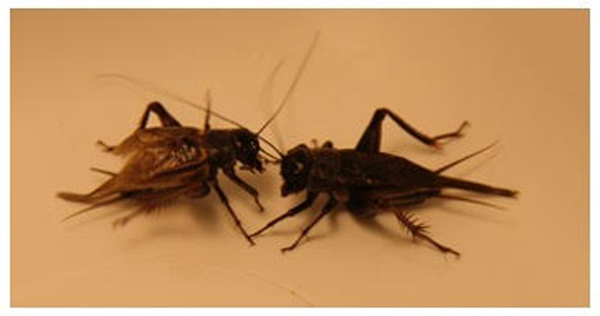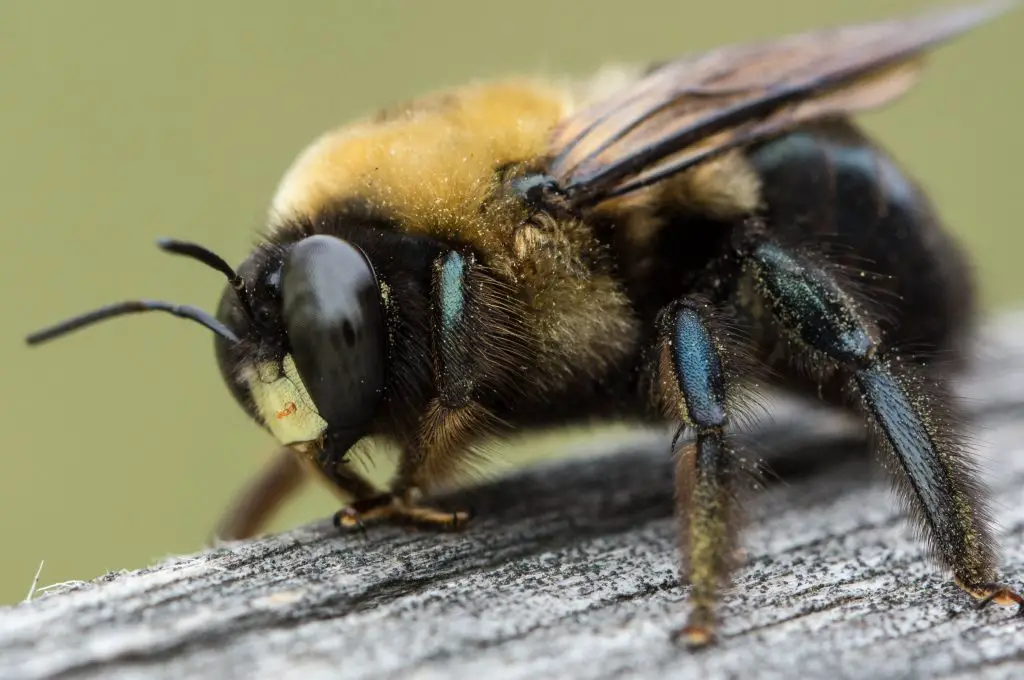How Do You Attract Ladybugs To Your Garden & Keep Them There, if you want to know then this article will help you a lot.
Ladybugs are so adorable! You can plant them in your garden to attract beneficial insects and other insects that will keep the bugs off your plants.
These help control aphids and other garden pests.
These are a welcome sign of an organic garden. They are a common indicator of an organic garden.
Pest control is often a necessary part of gardening, but it shouldn’t have to be done with pesticides. Say hello to eco-friendly pest control.
Also known as ladybugs or ladybird beetles, these little insects are easy to recognize because they have bright orange-red colouration and small black spots.
There are a few species that lack any spots. And there are also some species in solid black or black with red spots too.
There are over 600 species of cockroaches in the U.S., but only about 150 are found in homes.
Chewing mouthparts as opposed to piercing and sucking tubes.
And, when they are at rest, their thin wings are tucked under hard flaps called elytra. So, let’s see what attract ladybugs and How Do You Attract Ladybugs To Your Garden?
You can attract ladybirds-to your garden by:
- Attracting the insects that lady-bugs like to eat
- Adding plants and flowers that attract lady-bugs to your garden
- Giving lady-bugs a source of water
- Ensuring the lady-bugs have a safe place to sleep
- Eliminating pesticides
Why Are Ladybugs Good For Your Garden?
Ladybugs are a great help when it comes to keeping pests at bay. They’ll eat many types of bugs that would otherwise make themselves at home in your garden.

Chemical pesticides are hazardous to the environment. However, ladybugs are a safe and effective natural form of pest control.
Ladybugs, also known as ladybirds, are highly beneficial for your garden. Here are the reasons why:
- Natural pest control: Ladybugs are voracious predators of garden pests, especially aphids. They feed on aphids, mites, scale insects, and other harmful pests that can damage your plants.
- Organic pest management: Ladybugs offer a natural and environmentally friendly approach to controlling pests in your garden. Instead of resorting to chemical pesticides, which can harm beneficial insects and disrupt the ecosystem, ladybugs provide a sustainable pest control solution.
- Increased plant health: By feeding on aphids and other pests, ladybugs help prevent the spread of diseases that these pests may carry. This contributes to the overall health and vigour of your garden plants.
- Balance in the ecosystem: Ladybugs play a crucial role in maintaining ecological balance. By controlling aphid populations, they prevent outbreaks and reduce the need for human intervention. This allows other beneficial insects to thrive and contributes to a diverse and healthy garden ecosystem.
- Pollination assistance: While ladybugs are primarily known for their pest control abilities, they also contribute to pollination. Although they are not as efficient as bees or butterflies, ladybugs can transfer pollen from one flower to another while they move around your garden.
- Attracting more ladybugs: Creating a welcoming environment for ladybugs can have long-term benefits for your garden. Planting a variety of flowers, especially those with tiny nectar-rich blossoms, will help attract ladybugs and provide them with a food source.
- Educational value: Ladybugs are fascinating creatures, and their presence in your garden can be an opportunity for learning and observing nature. They are visually appealing and can capture the interest of children and adults alike, promoting a deeper appreciation for the natural world.
Remember, it’s always beneficial to encourage ladybugs in your garden, as they contribute to a healthier, more balanced ecosystem and provide natural pest control.
There are many types of beneficial insects that eat a wide variety of plant-eating insects, but the most common is the ladybug (ladybird) – so named because
Ladybugs don’t just eat aphids. They can also eat fungal diseases on plant leaves.
How Ladybugs Help The Garden

- Ladybugs are generally harmless, though they can cause problems in gardens by eating the eggs of some harmful pests. They eat many of the larvae and adults of pest insects that damage plants.
- You’ll be shocked to know that aphids are their favourite meal. It is this preference for aphids that make them so beneficial to gardeners.
- These soft-bodied bugs suck the plant juices, especially from the tenderest parts of the plant, such as the growing tips and the developing buds, stunting growth and affecting the fruit set.
- Ladybugs have voracious appetites and can eat over 40-50 aphids in a day.
- Most bugs eat 5,000 insects and insect larvae. They live as adults for only a few weeks
- Women produce between 1,000 and 1,500 eggs a year. They lay their eggs in clusters of 10, 50, or 100 at a time.
- This will help you understand what their potential pest control problems might be and what kind of offspring they have.
- Larvae that hatch from the eggs do not resemble the adults and gardeners often mistake them for harmful insect larvae. They are killed off by gardeners
- Gators are real predators, with an appetite to match. How can you improve your writing? We all have a voice that comes from our hearts.
- They feed on around 400-500 aphids during the 2-3 weeks they take to complete metamorphosis and become young beetles. Then another couple of weeks of feeding, pupation, and emerging as adults.
- Aphids are-not the only prey of lady-bugs and their larvae. The larvae of lady beetles and their relatives can also kill a wide variety of other pest insects.
- A ladybug’s entire lifecycle is completed in about 5 weeks or less, giving them ample time to give birth to 5-6 generations of offspring.
- Depending on their species, they aestivate in summer and hibernate through winter, often coming together in-large numbers.

3 secrets to attracting lady-bugs to your garden and getting them to stay
Insects are an important part of nature. If the habitat is to remain diverse and have good quality food for insects, diversity is a must.
Your yard is a mini-ecosystem all of its own.
Ladybugs are useful for their ability to eat pests. They help to control aphids, whiteflies, scale, and other garden pests.
There is a trick to keeping aphids in balance. It’s about keeping aphid numbers low enough that they have plenty of aphids to eat, but high enough that aphid predator are kept under control.
Ladybugs look for an environment free of predators, such as cats and dogs, to lay their eggs, and they only breed once every year.
Secret #1: Don’t get rid-of all the bad bugs
You don’t want to get rid of all the good bugs. You just want to get rid of the ones that might cause problems for your plants.
You should not kill aphids right away once you see them on your plants.
You’ll need to put the bug catcher back in its place for a few weeks after the pests are gone to ensure that lady beetles can find their way to your garden. This should be done before the garden is planted.
There are many reasons to choose organic produce over conventional. Some of the most important include that it isn’t sprayed with chemicals and pesticides, that it doesn’t leave residue, and that it isn’t genetically modified.
You should avoid using insecticides if possible, because they may not be beneficial to the lady beetles that you’re trying to protect. Insecticidal soaps and horticultural oils are safe to use.
Wait for the beetles to show-up and see which ones are the best ones. A better idea would be to wait for them to arrive and then see which ones are the best ones.
You don’t want your yard to become a haven for pests; they can do a lot of damage. You should protect your plants from them by making sure the predators are there.
Lady beetle females do not migrate. Instead, they stay put for the duration of a predator/prey cycle. If there is a sustainable source of food available, then, a good portion of the population will remain.
Insects are so important to the environment that when they are threatened, you should do everything in your power to save them. So how can you make sure the ladybugs got the invite to your garden?
That brings us to our second-trick.
Secret #2: Grow the right plants: ladybug attracting plants
It is a good idea to keep bad bugs out of your house, but it’s not a good idea to remove them from your garden entirely.
There are some bugs that can be beneficial to your garden. You have to just plantation flowers that attract ladybugs and ladybug attracting plants.
- Dandelion
- Calendula
- Cosmos
- Sunflowers
- Marigolds
- Yarrow
- Tansy
- Coreopsis
- Borage
- Queen Anne’s lace
- Cilantro
- Parsley
- Dill
- Fennel
- Chives
- Chamomile
- Feverfew
- Angelica
- Caraway
- Vetch
When you see a few aphids on your plant, resist the urge to go out and kill them. Instead, call an insecticide applicator to take care of the problem.
Some people immediately reach for pesticides when they see aphids or spider mites. But lady beetles only eat these pests when there aren’t any other more nutritious foods around.
Pesticides are designed to kill bugs, but they also kill beneficial insects and have proven to be dangerous for people as well.
If you must use any type of chemical control, go with an insecticidal soap or horticultural oil, which will cause less damage to lady beetles.
Wait for the beetles to show-up. A better idea is to look for them the day before.
If your pest problem is already in your garden, then your pest problem will find your pest problem.
Lady beetles can last for a year, so as long as there’s a sustainable food source around, a large portion of the population will remain.
Lady Beetles can be a pest but if they are encouraged by you, they’ll leave you alone.
If we want to get our hands on a really cool car, our next trick is to start looking around. There are always new models and styles to see, test-drive, and buy.
Secret #3: Provide a safe-habitat
You can make ladybirds stay in the area by creating a warm spot for them to overwinter.
An insect house, or “bug hotel,” is an effective way to provide shelter for insects. You can make a bug hotel in an area that gets southern exposure for the best-warmth.
Create a simple, rustic insect hotel by piling up a handful of pinecones in a lightweight net. Hang the habitat in a sunny spot that’s protected from wind and rain. Place it far enough from bird feeders and birdhouses.
How-To Buy & Release Lady-bugs In The Garden
If you don’t attract ladybugs to your garden they may be attracted to the garden next door. To solve this problem you can purchase ladybug beetles from here.
This is true, but if you have already made your garden insect-free, you should also check it to be sure you haven’t missed anything.
Ladybugs are an inexpensive option for gardeners. They eat aphids and other bugs that eat your plants and crops. [The treatment of primary hypothyroidism in childhood].
If you want to attract ladybugs to your plants, you’ll need to release them into the garden.
The bugs offered by the bug dealers are always collected in the wild. They are usually found at hibernation sites where they congregate in large numbers.
When you receive your first shipment of beetles, spray a little water in the bags and place them in the refrigerator.
This helps to alleviate the dehydration and overexcitement that occur during shipping.
Hibernation is an effective method of lowering your body temperature in order to survive for an extended period of time during winter.
Ladybugs are kept in a cold place, and their life span can last up to three months.
It’s quite possible for inactive members to become inactive, and then eventually to die off.
Most losses will quickly recover once they are brought into the garden.
Aphids usually are attracted to large plants like roses or magnolia trees.
It’s a good idea to knock the weeds from their growing place so that they can feed on the soil instead of growing in it.
They really enjoy using the product because it has an added bonus that makes them feel as if they have more natural-looking skin.
FAQs Of How Do You Attract Ladybugs To Your Garden!
What do ladybugs eat?
Ladybugs primarily feed on insect pests and pollen. Ensuring the presence of these food sources in your garden is crucial for attracting ladybugs. They need both to survive, and when abundant, they will likely relocate to your garden.
Should I use insecticides in my garden?
No, it’s advisable to stop using insecticides. Although insecticides help in destroying pests, they are harmful to ladybugs and can kill them, even if they are all-natural ones. To attract ladybugs, you will need to avoid using insecticides for some time.
What plants attract ladybugs?
Ladybugs are attracted to certain plants, especially herbs like coriander, fennel, and dill. They also feed on nectar, so planting flowers such as cosmos, calendulas, and marigolds can provide both food and shelter for them. Additionally, planting a variety of culinary herbs and allowing some to flower is an effective way to invite ladybugs to your garden.
Do ladybugs need water?
Yes, providing a water source is beneficial. You can leave a shallow dish of water near ladybug-attracting plants for them to drink. To make it safer for the ladybugs, add a few river stones or marbles to the dish, giving them a place to sit while they drink. Remember to refresh the water regularly to prevent it from becoming a breeding ground for mosquitoes.
That’s A Wrap!
When we are talking about ladybugs, How Do You Attract Ladybugs To Your Garden & Keep Them There then we are really talking about the largest of all insects, the scarab beetle.
They eat up to 100 aphids per day, they have an amazing lifecycle, and their life cycle is also the reason why they are not able to be commercially raised. A typical life cycle for ladybug includes mating, egg laying, larvae growth, pupation, and then the adult form.
When it comes to attracting ladybugs, the first thing we want to do is to attract their primary food source, aphids. The next step is to add something that will act as a “cover” for the aphids in your garden so that the ladybugs don’t.
References:

“My name is Leo Jacob, and I hold a Bachelor of Science degree with Honors in Applied Environmental Science and Sustainability from the University of the West of Scotland. Since childhood, I’ve been passionate about living an eco-friendly life. After completing my studies, I dedicated myself to finding simple ways to lead a more environmentally conscious lifestyle. I launched ecolifely.com to share my educational background and practical experiences with everyone, hoping to inspire others to join me in creating a greener, more sustainable world.”










